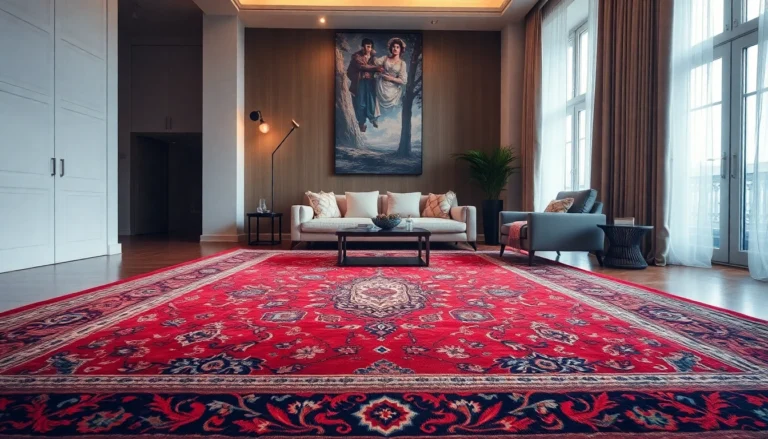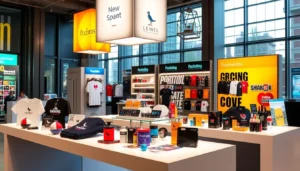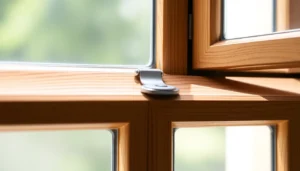Understanding the Security Features of Sash Windows
For homeowners and property managers seeking an elegant yet secure window solution, sash windows present a compelling choice. Renowned for their timeless appeal and classic aesthetic, sash windows can be enhanced with modern security features to provide peace of mind without compromising style. The importance of understanding their inherent security elements, potential vulnerabilities, and the latest reinforcement techniques cannot be overstated. In this comprehensive guide, we delve into the core security aspects of sash windows, compare traditional and contemporary security measures, and offer practical insights into making your sash windows as secure as possible.
To explore tailored options for your property, consider visiting Secure sash windows for expert advice and professional installation services.
Top Security Features for Sash Windows
Effective Locking Mechanisms and Reinforcements
Securing sash windows effectively begins with the right locking mechanisms. Modern sash lock systems, such as resilient espagnolette locks and multi-point locking systems, substantially reduce vulnerability to forced entry. These locks engage at multiple points along the sash, creating a formidable barrier against attempts to pry or jimmy open the window. For example, sash locks with anti-lift features prevent burglars from removing the sash from the frame entirely.
Reinforcements like steel bolts or sash bars further fortify vulnerable points, especially when combined with lockable handles. In addition, security-grade hardware such as sash fasteners designed to resist tampering can significantly elevate the security level.
Installing Sash Window Restrictors and Stops
Restrictors and stops are essential in limiting the maximum opening of sash windows, thereby preventing unauthorized entry or accidental falls—particularly vital in homes with children. Restrictors are available in various designs, including friction-based, key-operated, and removable types, allowing for customizable security levels.
Proper installation ensures these restrictors cannot be easily bypassed or removed. For example, keyed restrictors provide ongoing security while allowing necessary ventilation. They can be mounted discretely without impacting the aesthetic integrity of traditional sash windows.
Choosing the Right Hardware for Security and Aesthetics
Selecting hardware that balances security with visual appeal is crucial. Many manufacturers now offer high-security locks and restrictors that mimic classic hardware aesthetics. Brands like SJB Sash Windows or Hampton Windows produce security solutions that blend seamlessly with traditional timber sash windows.
Actionable tip: Always opt for hardware compliant with UK security standards such as BS EN 1670 grade 5 corrosion resistance and certifications from recognized bodies to ensure durability and performance.
Understanding the Security Features of Sash Windows
What Makes Sash Windows Secure?
Contrary to popular perception, sash windows can be exceptionally secure, especially when equipped with modern enhancements. Their traditional design—such as sash stops and multiple locking points—offers inherent safety features. Additionally, the two-way sliding mechanism allows for controlled ventilation, reducing the need to keep windows fully open, which minimizes risk.
Traditional sash windows typically employ sash stops—hardware fitted at the top of the sash to prevent sliding beyond a set point—adding an extra layer of security against forced opening. When complemented with modern hardware, sash windows can match or surpass the security levels of contemporary designs.
Common Security Concerns and How to Address Them
Despite their advantages, sash windows have vulnerabilities that can be addressed through targeted upgrades:
- Forceful entry attempts: Enhance locks and add sash restrictors.
- Tampering with hardware: Use tamper-proof screws and anti-drill locks.
- Glass breakage: Install laminated glass for shatter resistance.
- Removing the sash: Employ sash bars or bars integrated within the frame.
Regular inspections and maintenance are essential to detect and repair wear or damage that could compromise security.
Comparing Security Measures in Traditional vs. Modern Sash Windows
Traditional sash windows often relied solely on simple locks and stops, which, while aesthetically fitting, could be vulnerable to modern burglar tactics. Contemporary designs incorporate high-security hardware that can be integrated discreetly, preserving the classic look.
Modern sash windows also leverage innovative materials and locking technology, including reinforced frames, laminated glass, and electronic sensors, markedly improving their resilience. Conversely, traditional sash windows, if properly upgraded with modern lock systems, can achieve comparable security levels with minimal aesthetic disruption.
Installation and Maintenance for Maximum Security
Professional Fitting and Inspection
For optimal security, professional installation is paramount. Experts ensure hardware is fitted correctly, aligns precisely, and functions smoothly. Incorrect fitting can leave gaps or weaknesses that burglars can exploit. Regular inspections, ideally annually, help detect tampering, wear, or corrosion, allowing timely upgrades or repairs.
Furthermore, professionals can recommend tailored security solutions based on the specific architecture and security needs of your property.
Routine Maintenance and Security Upgrades
Maintaining sash windows involves checking for signs of tampering, cleaning hardware to prevent rust, and lubricating moving parts. Upgrading security features should be an ongoing process; innovative locks, restrictors, and reinforced glass are constantly evolving, and staying current ensures continuous protection.
Key upgrades include replacing outdated locks with anti-lift or keyed lockable fasteners, installing additional restrictors, and reinforcing frames with steel fittings.
Signs of Security Compromise and Immediate Actions
Detecting early signs of tampering can prevent burglaries. Indicators include misaligned sash, damaged locks, or unusual noise. If you notice any security concerns:
- Immediately lock your sash windows and avoid leaving windows open unattended.
- Contact a professional security specialist for inspection and reinforcement.
- Consider installing alarm sensors or monitoring devices for real-time alerts.
Prompt action can significantly reduce the risk of burglary or window damage.
Enhancing Security with Additional Safety Measures
Window Sensor and Alarm Integration
Modern security systems allow the integration of sensors that detect movement or forced entry. These sensors can be connected to alarms or home automation systems, alerting homeowners instantly of suspicious activity. Magnetic contact sensors on sash windows are discreet and reliable, offering an additional security layer.
For comprehensive protection, consider smart alarms that enable remote monitoring, especially for ground-floor sash windows or accessible locations.
Laminated Glass and Reinforced Frames
Upgrading to laminated glass—interlayered with polyvinyl butyral (PVB)—improves resistance to shattering, making it difficult for intruders to break in through glass panes. Reinforcements such as steel or aluminum frames also enhance overall durability, reducing the risk of structural failure under attack.
Expert advice suggests combining laminated glass with reinforced frames to achieve optimal impact resistance and security.
Additional Devices for Burglar Prevention
Other security devices include sash bars, security screens, and electronic sensors. Sash bars can block the sash from being lifted or removed, while security screens provide deterrence without obstructing views or ventilation.
Implementing a layered security approach—combining physical hardware, glass reinforcement, and electronic monitoring—offers robust protection tailored to your property’s needs.
Legal and Regulatory Considerations for Secure Sash Windows
Building Regulations and Security Standards
Compliance with UK building regulations and security standards is vital to ensure legal and effective security measures. Standards such as BS EN 1670 specify corrosion resistance levels, while PAS 24 certification indicates resistance to forced entry. Installation by qualified professionals ensures adherence to these standards.
Choosing Certified and Compliant Security Products
Always select hardware and security systems with recognized certifications. Certified locks, restrictors, and laminated glass withstand sophisticated intruder tactics and ensure legal compliance. Suppliers should provide certificates and test data confirming their products meet UK security requirements.
Consulting Experts for Custom Security Solutions
Every property presents unique security challenges. Engaging security consultants or specialists in sash window upgrades can deliver tailored solutions, combining aesthetic preservation with maximum protection. They can perform thorough risk assessments and recommend appropriate hardware, installations, and ongoing maintenance plans.








